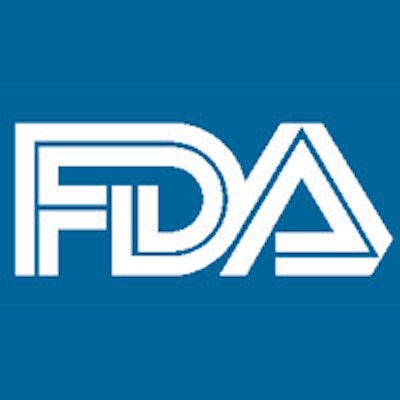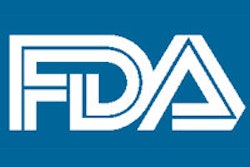
In a wide-ranging session on CT colonography (CTC), held in Silver Spring, MD, on Monday, a panel of experts convened by the U.S. Food and Drug Administration (FDA) delivered almost universally positive views of the evidence supporting the use of the exam for colorectal cancer screening.
The panel looked at the available evidence on the potential benefits and risks of CTC (also known as virtual colonoscopy), particularly the impact of increased screening of underserved populations, the potential harms of radiation, and the search for extracolonic findings.
Offering their views at the end of the meeting, each of more than 20 panelists agreed that CTC should be a colorectal cancer screening option offered in the U.S. along with other currently approved exams, including conventional optical colonoscopy, flexible sigmoidoscopy, and fecal blood and DNA testing. One panelist favored limiting CTC to asymptomatic patients, and another felt the exam should always be considered secondary to conventional colonoscopy.
Meeting highlights
Among the meeting highlights, Dr. Amy Berrington de Gonzáles, from the U.S. National Cancer Institute, discussed the radiation risks associated with the exam, concluding that the estimated risks of the small radiation doses used in CTC were far smaller than the benefits of identifying advanced polyps and cancer with virtual colonoscopy. Even a patient who underwent CTC screening every five years for 30 years would see a rise in cancer risk of 1% or less compared to the cancer risk in the population overall, a rate far lower than the risk of death from colorectal cancer in an individual who remains unscreened, she said.
"The FDA panel overall viewed CTC positively after hearing about the large benefit to risk ratio regarding radiation," agreed Dr. Judy Yee, professor and vice chair of radiology and biomedical imaging at the University of California, San Francisco, in an e-mail sent to AuntMinnie.com after the meeting.
During the session, industry representatives discussed their continuing efforts to develop and implement technology to make the exam safer, especially the development of quality standards to reduce the radiation dose.
"An abundance of evidence confirms that CT colonography is a valuable diagnostic tool, particularly for patients who are resistant to customary optical colonoscopy and would otherwise avoid a diagnostic procedure," said Gail Rodriguez, executive director of the Medical Imaging and Technology Alliance (MITA). "Expanding access to this technology will allow for earlier detection and treatment of this disease and turn more colon cancer patients into survivors."
The performance of CTC in the older Medicare population was also major point of interest in the Monday discussions, with speakers discussing the evidence that CTC performance is nearly equivalent in a senior population, compared with the younger group of individuals 50 and older who have comprised most CTC screening subjects to date.
Some studies show that CTC delivers sensitivity in the mid-80th percentile, versus sensitivities in the mid-90s in younger patients 50 and older, at most a 10% difference. Referrals to conventional colonoscopy are also slightly lower for nonseniors versus seniors, but exam performance remains excellent in both groups, speakers said.
A 2012 American College of Radiology Imaging Network (ACRIN) study published in Radiology reported that CTC is comparable to optical colonography for Americans ages 65 years and older, and the findings are consistent with data from the 2008 ACRIN trial, as well as a study of military personnel at the Walter Reed Army Medical Center, noted MITA in a statement.
New CTC advances
Dr. Ronald Summers, PhD, senior investigator at the U.S. National Institutes of Health, talked about some of the latest advances in CTC, including using the CT data for osteoporosis assessment, the benefits of computer-aided detection (CAD), and software-based innovations in polyp matching between prone and supine CT datasets.
On the issue of screening compliance, speakers presented evidence that more patients will get screened if CTC is an option paid for by insurance. But others felt the data did not fully support the prediction of a large increase in screening numbers, indicating that the real proof remains to be seen.
"Having CTC as another option for colorectal cancer screening was felt to be important, although there were questions raised about patient adherence studies," noted UCSF's Yee.
"The great majority of people not being screened are not being screened for lots of reasons, not necessarily the lack of choices," commented Mildred Fennal, PhD, a consumer representative on the gastrointestinal-urology panel. But others felt that screening with CTC would increase markedly if the test were reimbursed.
"The big issue is that it's not paid by Medicare," another panelist said.
As for safety, most seemed satisfied that safety issues in virtual colonoscopy were very minor, especially considering that the risk of polypectomy represents a major source of problems in colorectal cancer screening -- and colonoscopy will have to be performed no matter which test identifies the polyp to be removed.
"They accepted that CTC is a validated test for screening although, there was some concern about small polyps and serrated adenomas," UCSF's Yee wrote in her e-mail.
Similarly, descriptions of studies supporting the value of extracolonic findings and the generally low workup rate seemed to satisfy the group that the search for extracolonic findings was both an important and manageable task.
"The actual additional workup rate of extracolonic findings is low, and some panel members felt that detection of significant findings outside the colon may be of benefit to the patient," added Yee.
Even the controversial practice of polyp surveillance -- not removing all 6- or 7-mm polyps, but instead repeating the exam every two to three years to see if they have grown -- had its day at the meeting. Speakers presented evidence that only advanced neoplasias grow and there is time to find these few polyps before they become dangerous.
"I think the risk is really nonexistent," commented Elisabeth George, from Philips Healthcare. "But we have to be aware that all imaging modalities are being used at an increased rate for a lot of different things. If we're going to do due diligence, we want to keep that in the back of our minds."
The ayes had it
In the end, the panelists agreed that CTC has progressed to the point where it should be reimbursed by Medicare like other colorectal cancer tests.
Caveats came from Dr. Amy Foxx-Orrenstein, from the Mayo Clinic in Scottsdale, AZ, who said that conventional colonoscopy "should continue to be presented as the optimal test," even if CTC is approved for screening. Dr. Edward Dauer, from Florida Medical Services in Fort Lauderdale, said that CTC should be reserved for asymptomatic patients.
Most other panelists expressed complete confidence in CTC.
"The benefit seems clear and the risks not overly great at this point," said Yulei Jiang, PhD, from the University of Chicago. "It should be paid by Medicare."
"I agree. It should be a part of the patient's right to choose," said Dawn Aldrich, a patient representative from Solutions Cancer Resource Center in New Rochelle, NY.




















